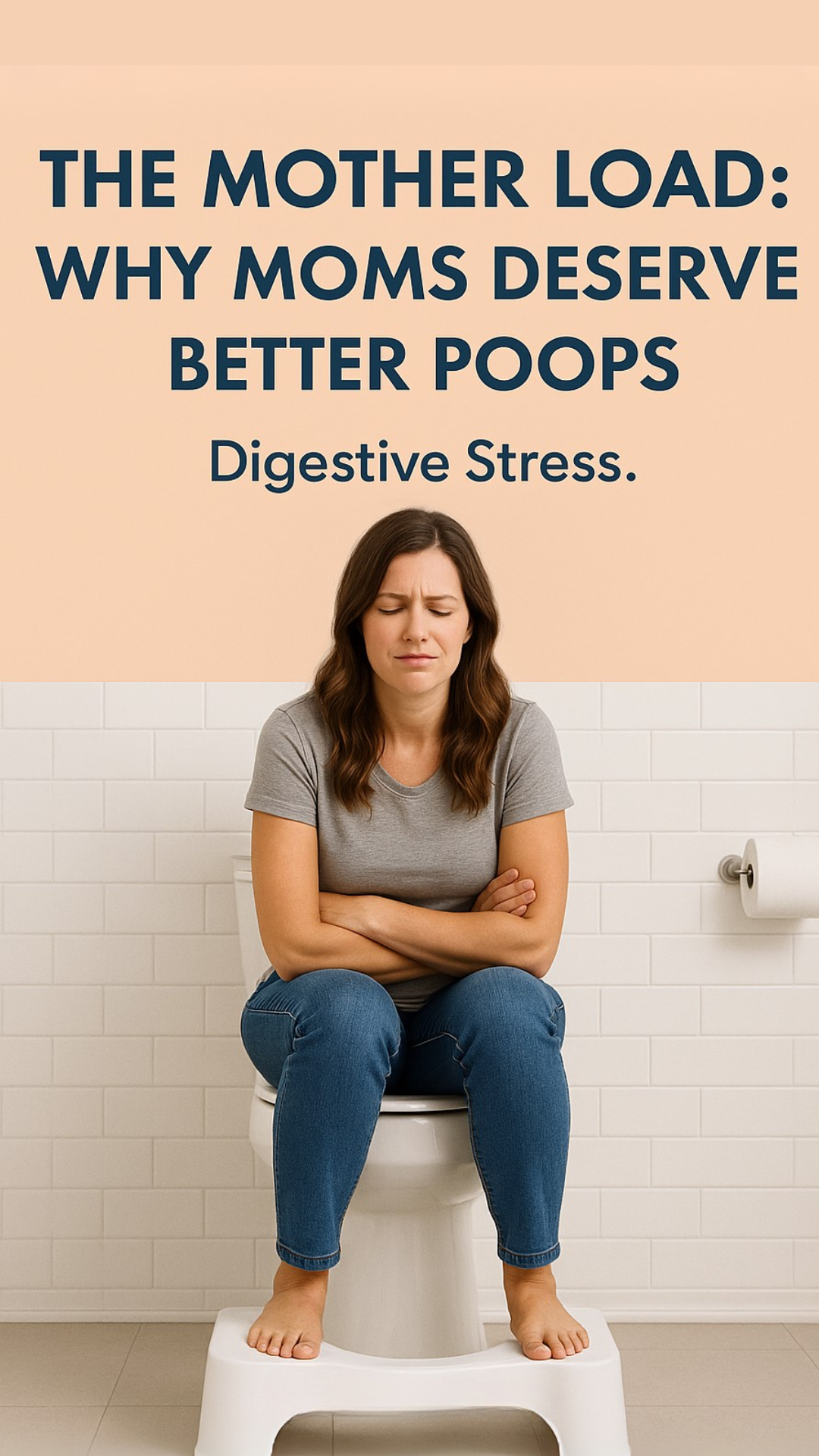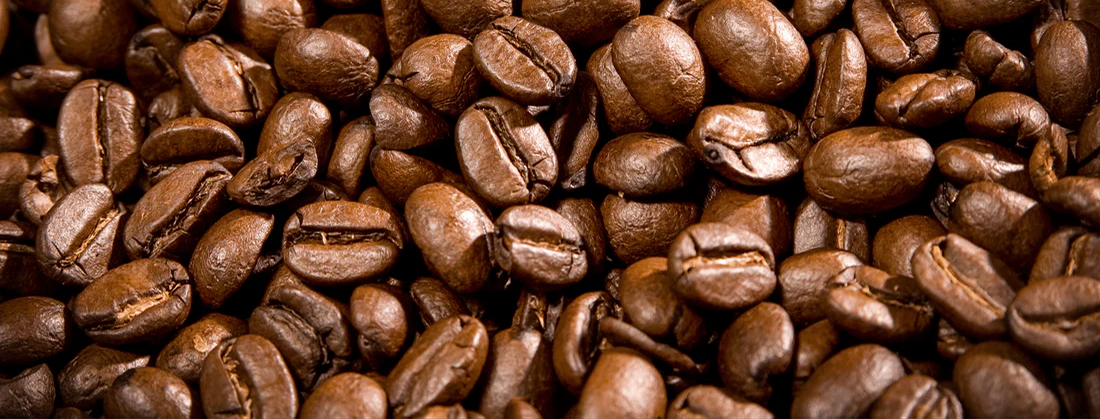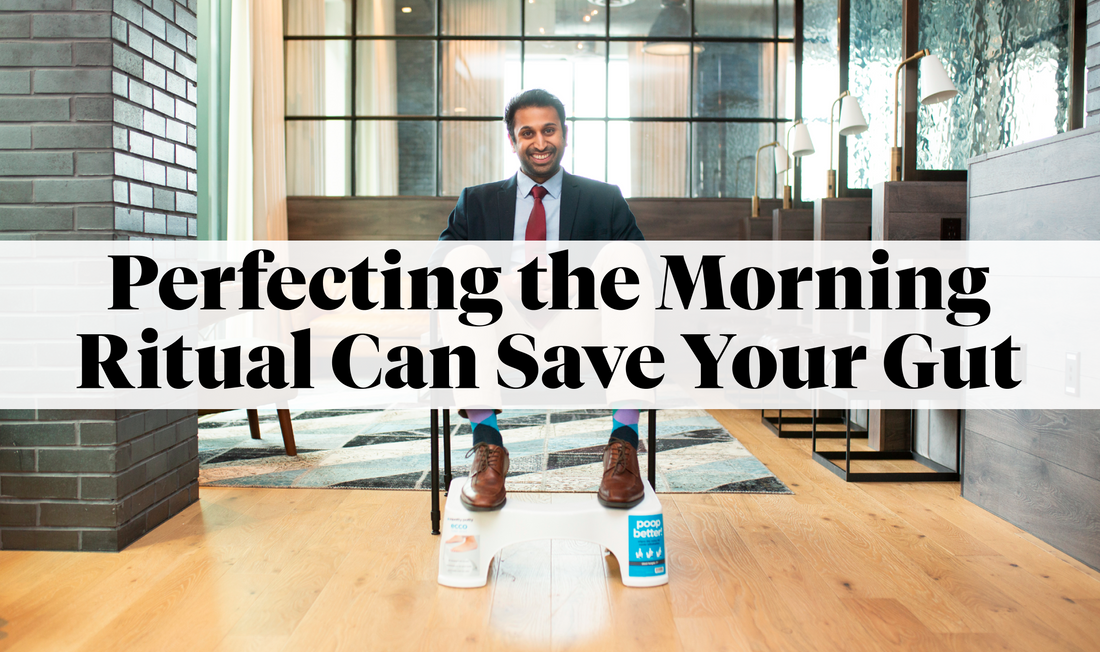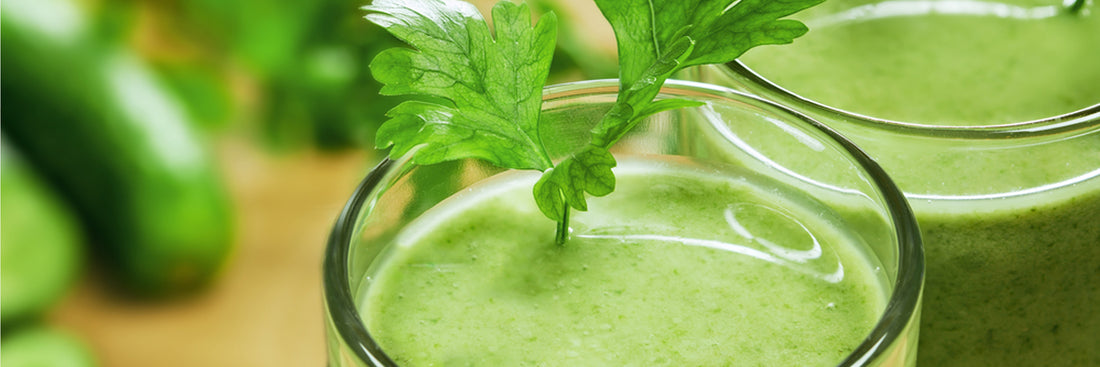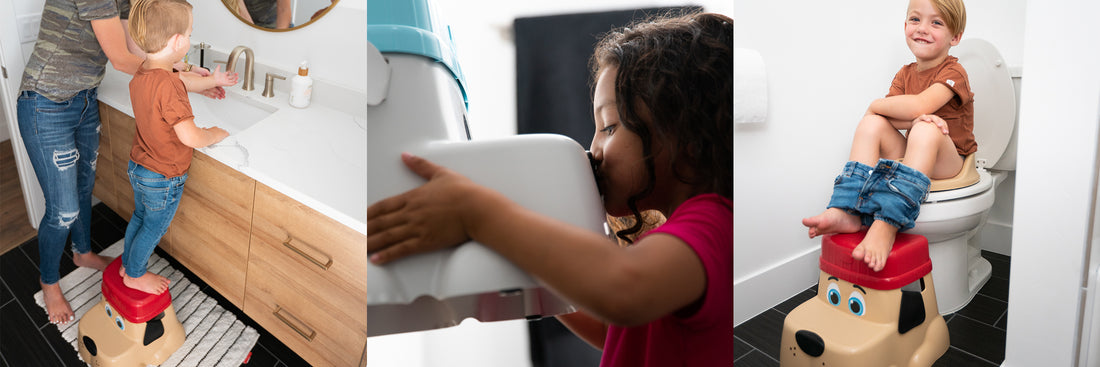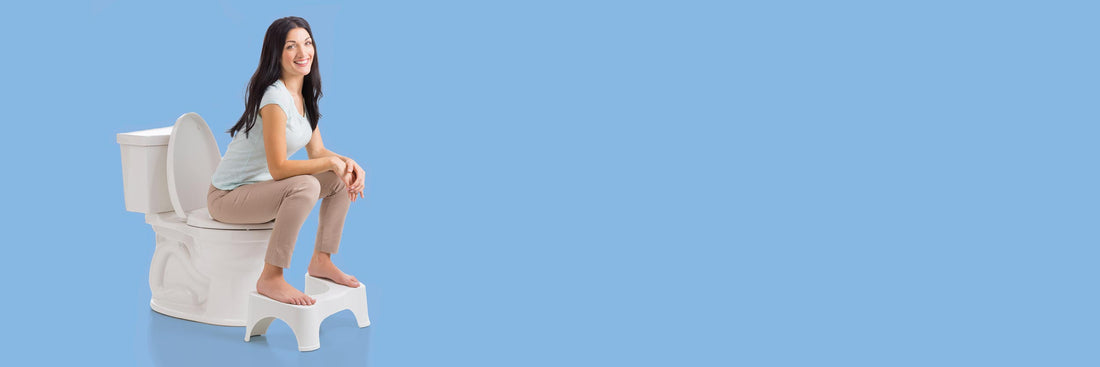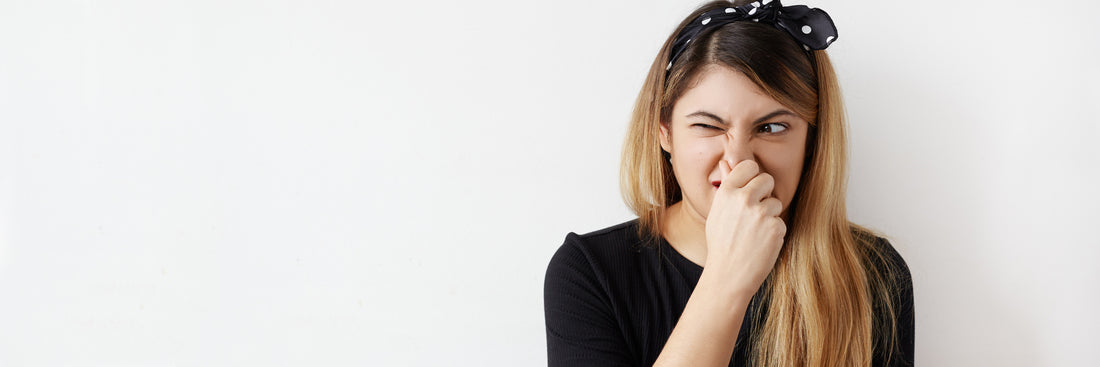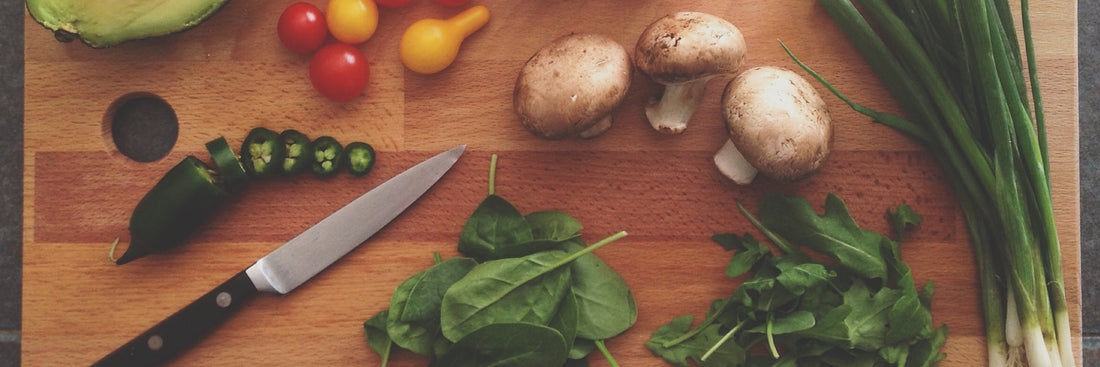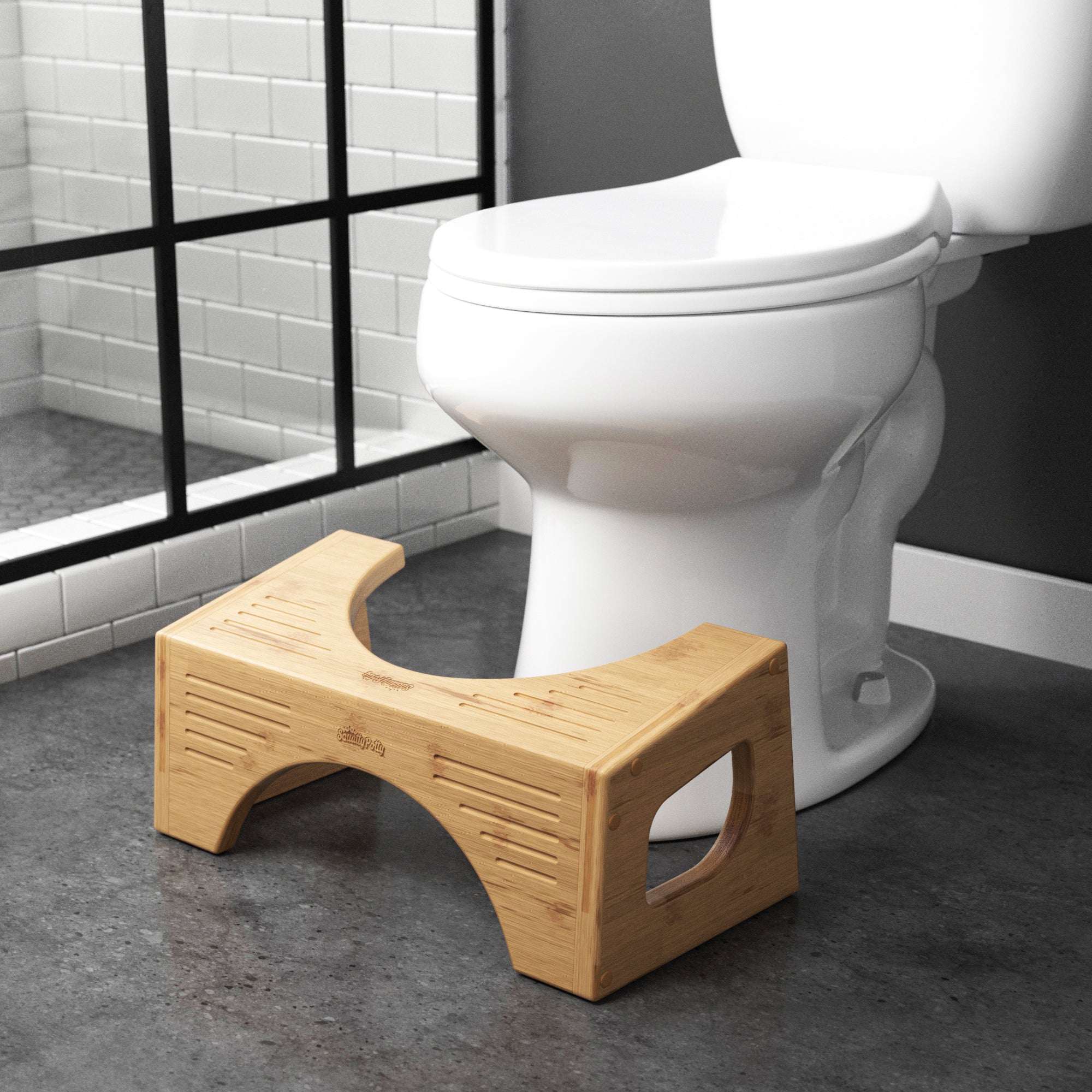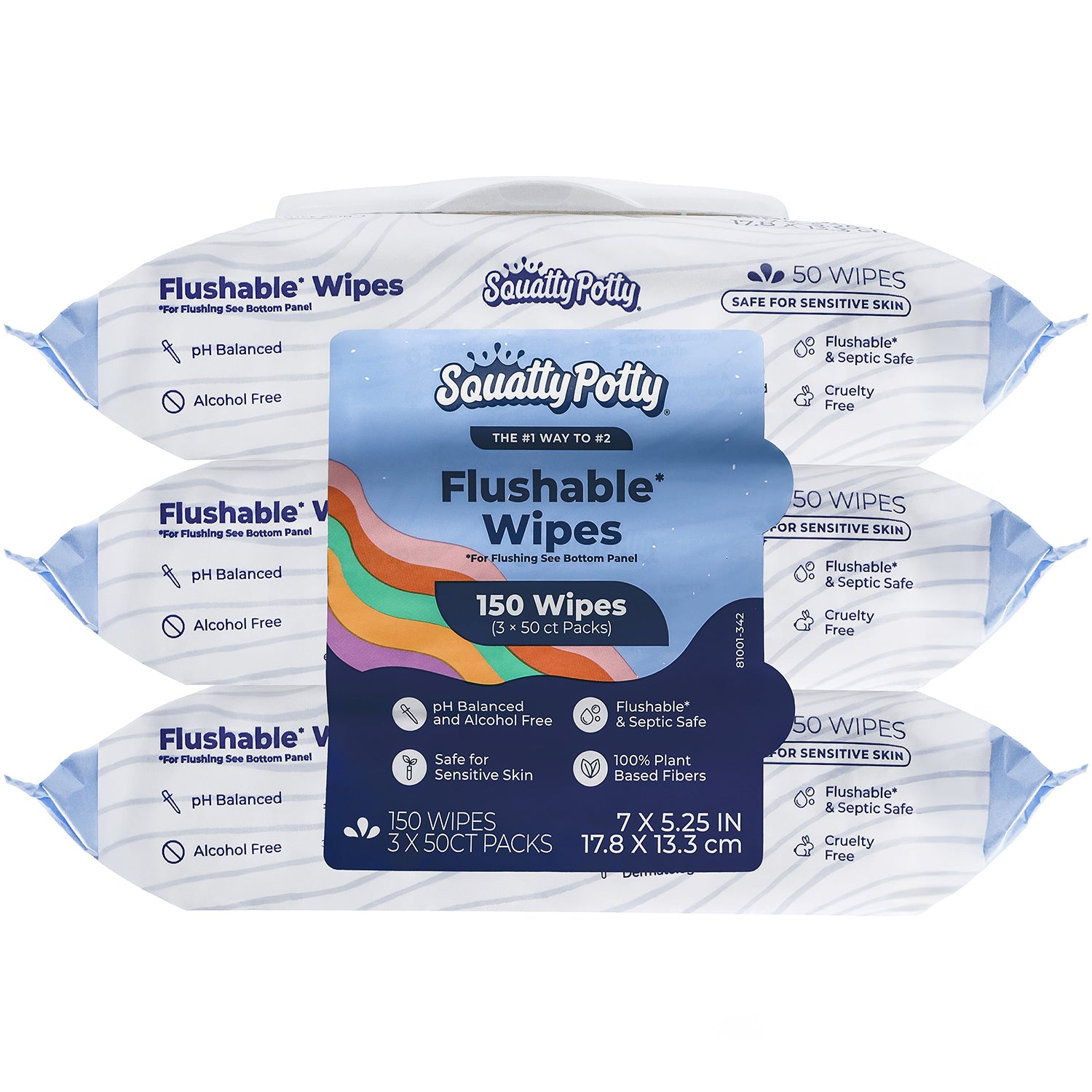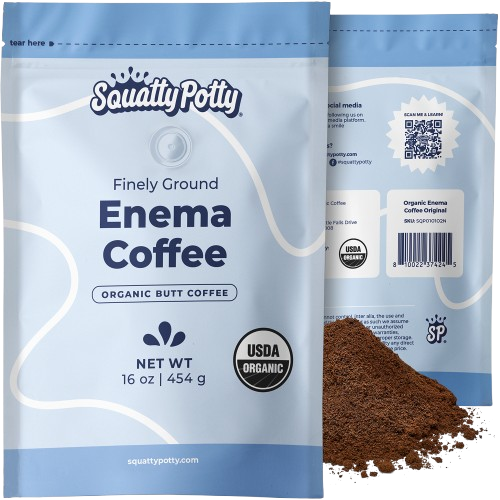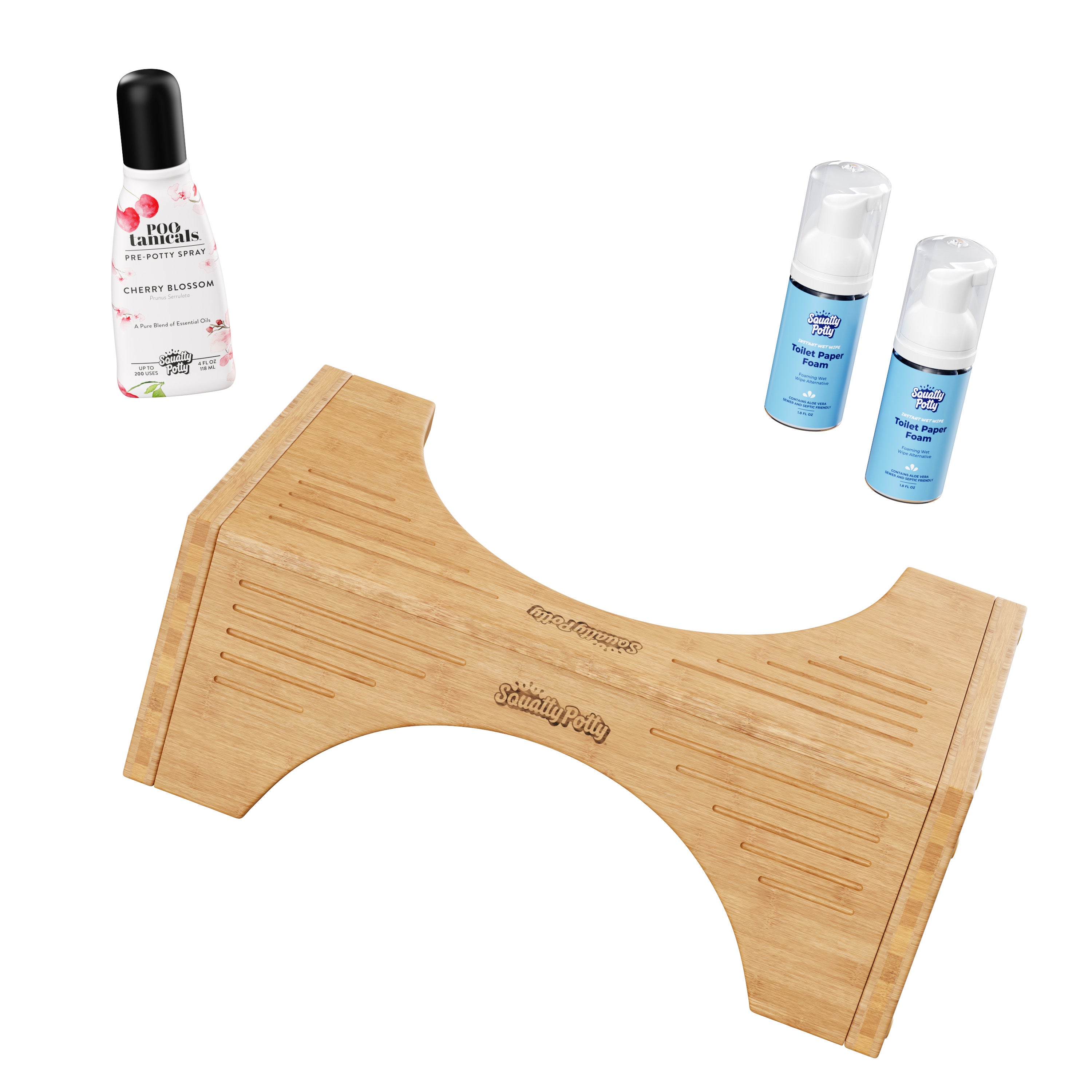Squatty Potty Blog
Coffee Enemas - The Ultimate Guide, Benefits, How-To, and Safety
The Comprehensive Guide to Coffee Enemas: Benefits, How-To, and Safety Coffee enemas have been a topic of interest in alternative health circles for some time. Proponents of coffee enemas claim various health benefits, from detoxification to improved mental clarity. If you’re curious about this type of colon cleanse, this guide will cover everything you need to know, including the potential benefits, how to perform one, and the associated risks. Coffee Enema Benefits: What is a Coffee Enema Good For? Detoxification: One of the primary reasons people turn to coffee enemas is for their supposed detoxification benefits. The use of coffee enemas is believed to stimulate the liver to produce more bile, aiding in the removal of toxins from the body. This detox process is said to enhance the body's natural cleansing processes, providing a cleaner internal environment. However, it's important to note that there is no scientific evidence to support the effectiveness of self-administered coffee enemas in completely detoxifying the body. Increased Energy: Some users report feeling more energized after a coffee enema. This effect is likely due to the absorption of caffeine through the colon and rectum, which can provide a temporary energy boost. Caffeine stimulates the central nervous system, leading to increased alertness and energy levels. Yet, relying on enemas for energy is not advisable without consulting a healthcare professional. Improved Mental Clarity: Many proponents of coffee enemas claim they lead to enhanced mental clarity and focus. By helping to detoxify the body, the colon and rectum may operate more efficiently, potentially translating to better cognitive function. However, the scientific evidence to support these claims is limited. Enhanced Digestion: Coffee enemas may help alleviate constipation and improve digestion by promoting bowel movements. They can stimulate peristalsis (the wave-like contractions in the intestines), which aids in moving waste through the digestive tract. While coffee enemas may relieve constipation, they should not be used as a regular remedy without medical advice. Antioxidant Properties: Coffee contains antioxidants like cafestol and kahweol, which help combat free radicals and reduce inflammation. These antioxidants may also provide protective benefits to the liver. Coffee enemas may thus contribute to overall health and well-being. However, there's limited evidence to suggest that coffee enemas are more effective than oral coffee consumption in healthy individuals. Why Coffee Designed for Enemas is Different from the Coffee You Drink Coffee used for enemas is distinct from the coffee you drink, and it’s crucial to understand these differences to ensure safety and effectiveness. 1. Purity and Organic Quality: Organic Coffee: Caffeinated coffee used for enemas is typically organic to avoid pesticides and chemical residues. Organic coffee ensures no harmful substances are introduced into the body through the enema. Purity: Coffee enema coffee is free from additives, flavors, and preservatives that are often found in regular drinking coffee. This purity is essential for reducing the risk of irritation in the colon and rectum. 2. Roast Level: Light Roast: Coffee for enemas is usually light roast, as it retains more of the natural compounds and antioxidants, such as palmitic acid, which are beneficial for detoxification. It has higher levels of caffeine and palmitic acid, stimulating the liver to produce bile. Drinking Coffee: Drinking coffee comes in various roast levels. Dark roast coffee has lower caffeine and palmitic acid content due to the longer roasting process, making it less effective for enema purposes. 3. Preparation and Cleanliness: Special Preparation: Coffee designed for enemas is processed and packaged to ensure it's free from contaminants and specifically labeled for enema use. Regular Coffee: Regular drinking coffee may contain oils, impurities, and other substances that can be harmful or irritating when introduced into the colon and rectum. 4. Caffeine Content: Higher Caffeine: Enema coffee typically has a higher caffeine content due to the light roasting process. Caffeine is crucial in stimulating the liver and promoting bile flow, which is essential for the detoxifying effects of the enema. Variable Caffeine: Drinking coffee varies widely in caffeine content depending on the beans and roasting process. Lower caffeine levels may not provide the same detox benefits when used in an enema. 5. Chemical Composition: Palmitic Acid: Coffee for enemas is high in palmitic acid, a compound that stimulates the production of glutathione S-transferase, an enzyme that aids in detoxification. Different Composition: Drinking coffee, especially darker roasts, may have altered chemical compositions that reduce the levels of beneficial compounds like palmitic acid. Our recommended coffee is a perfect solution for those looking to try a coffee enema. CLICK HERE TO BUY OUR ORGANIC ENEMA COFFEE How to Do a Coffee Enema Performing a coffee enema at home requires some preparation and the right equipment. Here's how to ensure a safe and effective experience: Preparation: Ingredients: Use organic coffee (preferably light roast) and filtered water to avoid contaminants. Equipment: You’ll need an enema kit (bag or bucket with a tube and nozzle) and a comfortable place to lie down. Coffee Enema Instructions: Brew the Coffee: Use 2-3 tablespoons of organic coffee for every 4 cups of water. Boil the mixture for 10-15 minutes, then let it cool to room temperature coffee. Should You Drink Water to Prepare for a Coffee Enema? Yes, you need to drink plenty of water to stay well-hydrated before and after a coffee enema. This is crucial to prevent dehydration and maintain electrolyte balance, as enemas can cause fluid loss. A recommendation is to: Before the Enema: Drink at least 8-16 ounces of water 30 minutes to an hour before the enema. After the Enema: Continue to drink water to replenish fluids and support detoxification. Are Coffee Enemas Good for You? While coffee enemas may offer some benefits, they also come with potential risks: Potential Benefits: Coffee enemas as part of alternative therapy may aid in detoxification and relieve constipation by promoting bowel movements. Potential Risks: There are case reports of adverse effects caused by coffee enemas, including electrolyte imbalance, infections, and rectal burns. In extreme cases, coffee enema-induced injuries have led to serious complications. The National Cancer Institute states that there's no scientific evidence to support the use of coffee enemas in treating cancer or other health conditions. Symptoms Coffee Enemas Can Potentially Help With Proponents of coffee enemas suggest that they can help alleviate symptoms like constipation, fatigue, brain fog, and digestive issues. However, it's essential to note that scientific evidence to support these claims is limited, and the effectiveness of self-administered coffee enemas varies among individuals. Can Coffee Enemas Help with Colitis? Colitis, including proctocolitis, involves inflammation of the colon. While some proponents believe coffee enemas may help reduce inflammation due to their anti-inflammatory properties, there is limited evidence to support their use for colitis. Consultation with a healthcare professional is advised. Can Coffee Enemas Help with Stool Issues? If there is one thing Squatty Potty cares about, it's helping you poop better. Coffee enemas may assist with stool issues by stimulating peristalsis, helping to soften stool, and promoting bowel regularity. However, scientific evidence to support the long-term safety and effectiveness of self-administered coffee enemas for stool-related issues is not conclusive. The History and Origins of Coffee Enemas The use of enemas dates back to ancient civilizations. The specific use of coffee enemas originated in the early 20th century and gained attention through the work of Max Gerson, a German-American physician. The Gerson Therapy included coffee enemas as a way to detoxify the liver and improve general health. However, the Gerson Therapy and the use of coffee enemas to treat cancer remain controversial due to a lack of strict scientific evidence. Risks and Warnings Electrolyte Imbalance: Frequent use of coffee enemas may lead to electrolyte imbalances, posing a health risk. Infections: Using improperly sanitized equipment can cause intestinal infections in the colon and rectum. Dependency: Relying on enemas for bowel movements can lead to natural bowel function disruption. Conclusion While some individuals claim health benefits from coffee enemas, such as detoxification and relief from constipation, it's important to approach this practice cautiously. The use of coffee enemas should be discussed with a healthcare professional to ensure safety. Current scientific evidence does not fully support the effectiveness of coffee enemas in treating specific health conditions, including cancer. Always ensure our content is accurate and properly sourced before trying alternative health practices.
Learn morePerfecting Your Morning Ritual Can Save Your Gut
We can all relate to that moment when you’re halfway out the door and the morning coffee hits. The cramping builds and you find yourself asking where this sensation was while you were sitting on the toilet and aimlessly scrolling through your phone. Before I owned a Squatty Potty, I knew this predicament all too well and was always wishing I had a few extra minutes to evacuate my bowels. Fast forward five years and now the most rewarding part of my job is helping people find their perfect morning squatting ritual to start their day. The GI tract is estimated to be 30 feet in length and while there are countless avenues to promote digestive wellness, I want to focus on the last 6 inches: the rectum. We often forget about this organ and I am frequently reminded how much power it holds over our gut health. The rectum is best described as a storage container that is in constant communication with your colon and signals the brain when you are ready to initiate a bowel movement. When you sit down on the toilet you increase intra-abdominal pressure and engage your pelvic floor muscles to unknowingly straighten your rectum to help pass stool. In fact, the word “rectal” originates from rectus meaning straight in Latin. Okay I digress – I have bored you with enough technical jargon! Perfecting Function So what happens when we don’t straighten out our rectum? Unfortunately, this is all too common and can lead to several issues including increased straining, incomplete emptying, upstream bloating/abdominal cramping, and even nausea. You may get diagnosed with constipation, hemorrhoids, or dyssynergia because your rectum is working overtime and understaffed. Even if you swear you have no problems with your bowel movements, I am here to tell you we can help your rectum too! Prior studies have demonstrated that squatting improves straightening your rectum. Squatty Potty has proven to replicate this alignment, while providing significant benefit in western populations like the United States. In 2019, I published a study with 52 healthy participants who recorded over 1100 bowel movements and found that individuals had increased bowel emptiness, reduced straining, and decreased time on the toilet while using the stool. I have seen this confirmed time and time again in my own practice. I recently had a follow up visit with a patient who had been struggling with debilitating symptoms of incomplete rectal emptying and the constant sensation of needing to pass stool for the past two years. He had already had lab work, stool studies, hydrogen breath test, colonoscopy, and cross sectional imaging without any answers. The simple suggestion of using a Squatty Potty resulted in significant symptom improvement within 4 weeks. Who would have thought that by straightening out the rectum we could improve quality of life at a fraction of the cost? I will be the first to admit that I didn’t appreciate the power of Squatty Potty until I made it part of my every day routine. Regardless of how “normal” you believe your bowel movements are, I implore you as well as every single one of my patients to go out and get one of these stools. You may find benefits similar to countless others while simultaneously improving your rectal function. Cheers to a bottom up approach to promote digestive health. Rohan Modi, MD Medical Advisory Council for Squatty Potty, LLC Gastroenterologist in Columbus, Ohio
Learn more7 Home Remedies for Colon Cleansing
Do you regularly suffer from constipation or irregular bowel movements? You're not alone. Research suggests that 15% of Americans are victims of chronic constipation, which can be a dangerous affliction. Such digestive diseases lead to the build-up of waste on the walls of the colon. The colon performs many essential functions— not only does it aid in the elimination of stool, but it also extracts salt and water from waste, maintains pH, and fights against harmful bacteria. The malfunctioning of the colon can cause serious health implications such as skin allergies, gallbladder stones, heart diseases, etc. Luckily, there are things you can do to improve your colon health. Eating healthy foods, exercising, and using a toilet stool have been proven to help you enjoy more satisfying poops and alleviate gastrointestinal problems. Shop Stools Easy and Quick Home Remedies for ConstipationMany have found that performing a colon cleanse is an easy preventative to avoid colon problems in the future. Green Vegetables Leafy greens are nutrient powerhouses; spinach, kale, brussel sprouts, asparagus, collard greens, leeks, and peas are all rich in Chlorophyll which helps cleanse the intestinal tract and, as a result, soothes the colon. They also help detoxify the liver and protect the body from environmental toxins. You can boil or steam the veggies, add them in soups or sauté them with a bit of butter or olive oil. Eating green veggies and implementing a Squatty Potty into your toilet routine can lead to smoother, healthier movements. Not sure which toilet stool is right for you? Use our guide to find the stool that best suits you. Choosing The Right Squatty Potty For You Ginger Ginger has antiseptic properties and is beneficial as it stimulates digestion. It can be added to any juice or eaten directly. Add one teaspoon of ginger juice and honey, and mix it in one cup of warm water. You can consume this mixture twice a day. You can also make a smoothie using: 1 tablespoon of ginger (peeled) 1 apple (sliced) A cup of spinach 1 carrot (sliced) Blend all these ingredients with 1 cup of water, and your smoothie is ready. Drink it once a day to ensure proper functioning of the intestinal tract. Juices made by using apple and lemon Apples and lemons are rich in nutrients that improve the digestive action, such as vitamins C & A, antioxidants, and fiber. You can make delicious juices from these fruits: Take ½ cup of apple juice, add 2 tablespoons of lemon juice, and a teaspoon of ginger juice. Mix it in ½ cup of warm water. You can drink this mixture once a day to help detoxify the colon and encourage proper digestion. Apple Cider Vinegar Unfiltered apple cider vinegar helps flush out waste from our bodies while retaining the beneficial bacteria. Drinking apple cider vinegar with honey cleans the colon and restores the digestive system. Consuming this mix and utilizing a Squatty Potty to ease constraints on your digestive tract will help your poo slide right out of you. Mix raw apple cider vinegar and honey in equal quantities (2 tablespoons) Mix it in one cup of water and drink it once daily. It will not only remove the toxins but includes tons of other benefits such as preventing diabetes and lowering bad cholesterol. Eating Fiber-Rich Foods Fiber is excellent for keeping your bowels healthy and cleansing the colon by eliminating waste from your body. Eating grains that are high in fiber, such as beans, lentils, quinoa, oatmeal, and vegetables like peas, artichoke, and brussels sprouts, will help make your gut health even healthier. Raspberries, mango, figs, and coconut also help nourish the colon. Adding fiber-rich foods and propping your legs up on a bathroom stool will allow your colon to straighten and your waste to come out cleaner. Most people don’t realize, but pooping with your feet on the ground can cause a kink in your tunnel, which can lead to major blockage. Squatty Potty undoes this kink so you can do your business quickly and cleanly. Sea Salt and Water Water plays a significant role in detoxifying our bodies. When the colon is dehydrated, it is easier for the toxins to stick inside and form a build-up. You must consume at least 2-2.5 liters of water daily to ensure optimum colon functioning. Add one teaspoon of sea salt to half a liter of water and drink it before breakfast (before eating anything else). Drinking the mixture encourages bowel movement and improves digestive health. Chia and Flax Seeds Both these seeds are superfoods that are high in fiber. They also contain Omega 3 fatty acids that reduce inflammation in the colon and remove the built-up toxins. You can add a teaspoon of the seeds in water, drink the mixture, make a pudding, or sprinkle them over salads. Soak a tablespoon of chia seeds in one cup of water for 5 to 10 minutes so the fiber can perform its optimum function by absorbing water Mix the seeds in about 1 cup of yogurt Consume this mixture 4 times a day for about 4 weeks to cleanse the intestinal tract. There are different over-the-counter colon cleansing supplements also available in the market. Performing a colon cleanse is vital because it doesn't only eliminate bacteria and improves digestion but also promotes weight loss and prevents various diseases. The Final TurdImplementing these quick and easy home remedies can help you avoid irregular bowel movements and prolonged constipation problems. In addition to consuming healthy foods and drinks, regular exercise, and assuming a squatting position with a toilet stool, can help unclog your pipes when you unload the goods. While we can’t help you stick to your diet, our Squatty Potties can help you have healthier, more satisfying bathroom experiences. Shop Stools Disclaimer: The words and other content provided in this post, including linked materials, are not intended and should not be construed as medical advice. If you or any other person has a medical concern, consult with an appropriately licensed physician or other health care professional immediately. Do not rely on the information presented in this post. Never disregard professional medical advice or delay seeking it because of something you have read in this blog post or any linked materials. If you think you may have a medical emergency, call your doctor or 911 immediately.
Learn moreThe Potty Training Tool You Can’t Live Without!
You’ll miss many things once your baby grows up, but changing dirty diapers is probably not one of them. Potty training horror stories are a common conversation amongst parents, but they may not stop there. Did you know that improper elimination in your child can lead to all sorts of health issues later in life? We’re not here to scare you, but we are here to educate you- with the help of an expert. Dr. Steve Hodges, a pediatric urologist and author of “It’s No Accident”,“Bedwetting and Accidents Aren’t Your Fault", “Jane and the Giant Poop”, and “The MOP Book”, has made his main focus dysfunctional elimination in children, due to the growing issue. “A lot of the issues lead back to how they poop. We found that if kids don’t empty their colon fully, it backs up and leads to urinary tract infections, bed wetting, day time wetting, and not to mention constipation. It’s way under diagnosed and way under treated. I focus a lot of my career directly on this problem. You can’t teach a young child to relax their pelvis. You have to relax your pelvis to allow those muscle to empty well. You can’t just tell a three-year-old ‘relax your pelvic muscle’ so they have to be in the right position or nothing works right.” Potty Pets is a toilet stool designed to put your child in the natural squatting position right over your own toilet. Squatting to eliminate is proven to straighten out your anorectal angle to prevent blockage of fecal matter in your colon and allow for a more complete elimination. Potty training can be difficult. Dealing with urinary tract infections, constipation, and bed wetting is even worse. Teaching your children how to properly eliminate from the start is the answer. Often times, children are a little hesitant to try out the “big kid potty”. We go more into addressing their toilet fears here. Many fears are validated; I mean, no one wants to fall in or off of the toilet. This is why we created a seat that securely sits on top of the toilet seat. The dog’s or bear's nose doubles as a step, allowing your children to safely and securely get on to the potty when they need to go. We’ve made potty training a safe and comfortable environment to let those potty fears flush away. Unlike other potty training tools, you won’t need to graduate from Potty Pets. As your child grows, you can take off the ‘hat’ topper to create the perfect height for your child. It’s even light weight and easy for them to carry. Creating a tool they look forward to using is key. With your order, you’ll receive stickers for you and your child to customize your Potty Pet your own way! Dookie The Unicorn also makes a great potty training pal. Dookie is a stuffed unicorn with a stuffed rainbow poop insert. You know that if Dookie the Unicorn poops in the big kid potty, they will too.
Learn moreShould I Squat to Poop?
Are you sitting on the toilet while reading this? Great timing, but not so great posture. Let me explain. Although The United States has been quite attached to their modern commode, many countries around the world have squatted to poop for centuries, and science is starting to catch up. Your body relies on a bend in the colon, (where your poop lives) and the anus, (where your poop says hi) to keep everything stored until showtime. Your Puborectalis Muscle helps keep your poop in place by kinking your colon, much like a bend in a garden hose stops the flow of water, when you’re sitting or standing. This muscle is helpful for when you’re sitting and don’t want to poop, but unhelpful for when you’re sitting and do want to poop. Your colon’s sweet spot comes with the squat. This tells your Puborectalis Muscle to fully relax. Squatting straightens the kink and allows for a complete elimination. Need the facts? We got ’em. A researcher named Dov Sikirov asked groups of study participants to poop while squatting. He compared how long each bowel movement took and the effort required. Sikirov published his results in Digestive Diseases and Sciences and found that in a squatting posture, subjects required, on average, only one-third the time to poop. Plus, subjects who squatted rated the experience as much easier than those who sat.In Japan, researchers took this quite a bit further. Six patients had their rectums filled with a contrast solution that could be seen under X-ray. The patients then ‘released’ the fluid from a squatting or a sitting position while being filmed with X-ray video. The videos showed that the anorectal angle increased significantly from 100 degrees to 126 degrees, from a sitting position to a squat, making elimination much easier in the squat. With this knowledge, Squatty Potty’s founders created a solution: a stool that works hand in hand with the modern toilet. Squatty Potty is designed to tuck in under the toilet when out of use, is the correct height to simulate the squat depending on the height of your toilet, and allows for healthier elimination for people of all ages.Select Squatty Potty models are sold in stores at Bed, Bath & Beyond, Costco, Target, and Ace Hardware. Squatty Potty sells online at the Squatty Potty website, Ebay (make sure to read this if buying through ebay), and Amazon. We refer our Canadian patrons to Canadian Tire, Cayne’s, Bed Bath and Beyond online, or Amazon.ca. You can search for a retailer near you here. Just wait, there will come a time when people will scratch their heads at that strange dark time in history when folks sat straight up to poop.
Learn moreHow To Be A Poop Detective
I am a mom, practicing Pediatrician and author from Phoenix, Arizona. I recently released a children’s book, How to be a Poop Detective. I highly recommend all humans squat when pooping just like toddlers instinctually do when they are eliminating in a pull-up. This is how our bodies are constructed and meant to poop. Therefore, I am extremely confident in my endorsement of the Squatty Potty®. It is one of the most ingenious inventions I have come across in my medical career. Why? Because we have a pooping-problem epidemic in this country and as a doctor, I am on the front line trying to teach families why and how to fix this. Entire aisles in stores are dedicated to a billion-dollar industry to unnaturally aid and assist our nations problematic pooping process with drugs. The Squatty Potty has been a miraculous addition to my crusade because it, like my book, offers a natural approach to help all Americans, big and small, poop easier. Squatty Potty and I have merged our happy-pooping mindset by modifying my book to create a Squatty Potty edition. In that, it displays the obvious reasons for our marriage. I am proud and excited to part of the Squatty Potty family and to share my labor of love with you. My calling, passion and motivation for writing How to be a Poop Detective, The Squatty Potty Edition stems from over fifteen years of practice where I have daily discussions with kids and families about dietary decisions which support a well-functioning digestive tract and how this relates to different health conditions. For this reason, I strongly believe that ‘poop education’ is an essential component of medicine and should be discussed on a routine basis. I regularly teach my patients and families that healthy poop indicates a healthy gut and thus, a healthier body. We also discuss how important it is to eliminate the “trash” in their “pipe” or colon daily. We talk about how to detect foods and drinks that clog our pipes and those that help to move them along and show how these choices along with the Squatty Potty, create a happy and efficient elimination process. How to be a Poop Detective, The Squatty Potty Edition helps to teach kids and parents all about what constitutes normal pooping. Many kids and parents are grateful for this education because they are unaware their bathroom experience isn’t what it should be. It is important to learn the “5 S’s” of poop: Shape, Soft, Sink, Shade and Shoot. Through this exercise, the smiles, giggles and curiosity often transition to amazement as we come to learn that constipation is an unrealized issue and a key factor responsible for their various ill symptoms. Hippocrates, the father of modern medicine said, “all disease begins in the gut”. I know many patients, both past and current, who will attest to the fact that when simple dietary modifications were made and the “5 S’s” monitored, their children’s disease states improved or were alleviated completely. Their asthma went away, ear infections declined, eczema disappeared, constipation resolved, urinary tract infections stopped, acne cleared, heartburn reduced, chronic abdominal pain stopped, and many lost weight because of cutting calories from unhealthy dietary sources. When you combine my simple approach with the Squatty Potty, everyone’s poop literally shoots out with ease as it should. They become professional expert poop detectives. Prevent constipation and have “the best poop of your life” with simple dietary modifications in addition to using the Squatty Potty! To conclude, the top five reasons to improve health by emptying your colon easily and successfully with a Squatty Potty: An empty colon allows for better ability to empty your bladder. Yay! It makes both #1 and #2 easier. An empty colon means less chance of having a bellyache. Chronic abdominal is so commonly caused by a full and constipated colon. It is one of the most common reasons for kids and adults to seek medical care. An empty colon eliminates the worry of having to hold your poop if you have fear of going in public. This is a real problem for many kids going back to school. An empty colon eliminates the need for pharmaceutical stool softeners. An empty colon decreases the potential for bedwetting and wet underpants due to an overfull colon and therefore, an overflowing bladder. I have found it to be an important addition for many families to aid in the potty training process. I am excited to recommend everyone use the Squatty Potty and to read and learn from How to be a Poop Detective, The Squatty Potty Edition. Here is to healthy and happy gut health and happy pooping!
Learn moreEver wondered why you get butterflies in your stomach when you feel nervous or stressed?
It is thought that, as well as nutrition and lifestyle choices, our state of mind may actually impact our digestive system. Interestingly, it seems the deal works both ways: scientists are increasingly convinced that the contents of our digestive system may have a major impact on our state of mind. Did you know: that 100 trillion microorganisms live in your intestines: that’s more than 10 times the number of human cells in your body. Just like weeds compete with flowers for space and nutrients in a garden, ‘bad’ bacteria compete with ‘good’ bacteria inside the gut. If the gut environment is healthy, ‘bad’ bacteria struggle to flourish. We obviously want the good bacteria and all of their powerful benefits. There are Clostridium Butricum- which produces important fatty acids, Bifidobacteria- which produces vitamins, and Lactobacilli- which boosts immunity and protects against carcinogens! A healthy gut environment stimulates the digestive process, aiding the absorption of nutrients, and helps provide gut wall resistance. A healthy gut environment prevents growth of harmful, pathogenic bacteria, and breaks down poorly digested food. In return for their hard work, the bacteria get to thrive in a safe, nutrient-rich environment. Wondering how the gut affects the brain? Over 100 years ago, Russian immunologist, Elie Metchnikoff, proposed that a healthy gut environment could help combat senility and suggested that the good bacteria found in yogurt would increase a person’s longevity. Today, researchers are beginning to understand the role of gut bacteria in immunological, metabolic, and neurological diseases: what we eat can alter the composition and function of the gut bacteria and this has an effect not only on the metabolism, but also on the brain function. Who knew the two were so close! The gut and the brain communicate more so than you’d think. Microbial compounds communicate with the brain via the vagus nerve, the largest nerve in the body. Gut microbes interact with the immune system, which communicates with the brain. The gut releases hormones and neuroactive compounds which travel through the blood stream. They communicate so much so that scientists have named the gut the “second brain”! Did you know: that the digestive tract forms over 70% of the the body’s immune system? Or that the nervous system of the gut contains more neurons than the entire spinal cord or that it’s able to regulate itself without brain interaction? So, how does the brain affect the gut? The brain has a direct effect on the digestive tract. In fact, the very thought of eating can stimulate salivary glands and release gastric juices which help prepare for digestion. Once food reaches the stomach, receptors send their own signals. These signals cause the release of more gastric juice and muscular contractions. When you have eaten enough, the digestive tract releases satiety hormones which signal to the brain that the person is no longer hungry. That’s your gut giving feedback to your brain! As you’ve probably experienced, your gastrointestinal tract is sensitive to emotion, stress, anxiety, and depression. Fear or sadness can make you feel nausea or have loss of appetite, whereas love can give you the feeling that “butterflies are in your stomach”. Now, what can you do with all of this information? Here are some tips to a healthier mind & a healthier gut: Balancing the mind: As we have seen, the gut is sensitive to our emotions and our state of mind. There have been a few studies to prevent anxiety and handle stress. Take time to quiet your mind and meditate. The Dalian University of Technology in China did 74 meditation trials at Johns Hopkins University in Baltimore on mindfulness meditation. They found that five 20-minute sessions of meditation reduced the amount of cortisol that was released in response to the stress test. Squat to eliminate.Relaxing the muscle around your colon is crucial in full elimination. To do so comfortable, use a Squatty Potty. An average American can have up to twenty pounds (I repeat, twenty pounds!) of stool AKA, toxic waste in their digestive system. Squatting to eliminate can allow your body a complete elimination and prevent an unhealthy gut. Take time for restful sleep.Studies at the University of Pennsylvania found that 4-5 hours of sleep at night for one week resulted in participants feeling more stressed, angry, sad, and mentally exhausted. When resuming normal sleep patterns, participants reported a dramatic improvement in mood. Engage in daily exercise.The University of Georgia found that regular exercise reduced patient anxiety by 20%. Exercise sessions greater than 30 minutes were better at reducing anxiety than shorter sessions. And of course, follow the Squatty Potty motto: healthy colon, happy life!
Learn moreStinky Poo: Why It Reeks and What You Can Do About It
Nobody expects poop to smell good, but sometimes it smells so bad you expect to hear about it on the six o’clock news. It’s worse if it’s your own, but even worse when you drop the stink bomb in a public restroom or at a friend’s party when people are lining up to use the restroom. Oh, the shame! The good news is that you can make your poop less stinky and have more satisfying eliminations along the way. Eating healthier, getting your gut checked, and using a toilet stool to unkink your colon are easy ways you can help quell the smell. We’ve done some research to reveal the reasons your poop stinks and how you can make the stench of your waste go from woeful to wonderful. Let us help you make and take more pleasant smelling poops. Squat More The science is in—the most effective and efficient way to poop is to position yourself in a natural squatting position. Pooping with your feet flat on the floor can lead to a kink in your intestines, which can cause major blockages. Clogs from kinks can result in the buildup of bacteria in the digestive tract. This bacteria is often the culprit of nasty odors in your waste.Using a specially designed toilet stool, helps undo the kink in your digestive system without any extra effort on your end, so you can take healthier smelling poops. Not sure which toilet stool is right for you? Use our guide to find the best stool for you. Shop Stools Eat Less Remember, what goes in must come out. The more you eat in excess of what your body needs, the uglier it gets on the other end. If you commonly feel bloated after eating, you may be consuming more food than your body can comfortably digest. Here are a few suggestions on how to cut back: Eat 10 percent less across the board. Serve yourself smaller portions, and don’t come back for seconds. Eat more, smaller meals throughout the day. Stop eating two hours before bedtime. Consume Less Sulfur-Rich Food Sulfur is an essential mineral, so you don’t want to eliminate it from your diet, but if you eat a lot of sulfur-rich foods, the excess sulfur may be making your stool more odoriferous than normal. Here’s a list of sulfur-rich foods to try and avoid: Arugula Coconut milk, juice, and oil Cruciferous vegetables (bok choy, broccoli, cabbage, cauliflower, horseradish, kale, kohlrabi, mustard leaves, radish, turnips, watercress) Dairy (except butter) Dried fruits Eggs Garlic Legumes (beans) Cut Back on Processed Foods Processed foods contain synthetic ingredients, some of which your body may be ill-equipped to digest. Switching to a whole-food diet is the easiest, most complete solution. Otherwise, read food labels and choose only those packaged foods that use all-natural ingredients. Sticking to an all-natural diet won’t be as easy as propping your feet up on a toilet stool, but it can have a significant impact on the stench of your stool. Trim the Fat Excessive dietary fat can lead to undigested fat in the stool — a condition referred to as steatorrhea. If your body doesn’t produce enough lipase (a fat-digesting enzyme), the undigested fat putrefies as it makes its way through the colon, producing a foul-smelling odor. Of course, your body needs fat in order to function, but try to eliminate trans fats and scale back your consumption of saturated fat. Trans fats (also referred to as hydrogenated and partially-hydrogenated fats and oils) are common in fried foods, bakery items, chips, crackers, and other yummy treats that are bad for you. You get saturated fat primarily from animal products, including red meat, pork, poultry skin, full-fat dairy products, mayonnaise, and eggs. Just like using a toilet stool, cutting back on fat can help eliminate bad bacteria that leads to foul-smelling fecal matter. Get Checked for Lactose Intolerance If you experience diarrhea, nausea, abdominal cramps, bloating, or gas 30 minutes to a couple of hours after consuming dairy (milk or ice cream, for example), you may have lactose intolerance, which is also contributing to your smellier-than-normal poops. With lactose intolerance, your body doesn’t produce sufficient amounts of the lactase enzyme to break down the lactose (a sugar in milk), so the undigested lactose lands in your large intestine where it is fermented by bacteria, a process which produces stinky gas and poop. If you have lactose intolerance, you have three options for dealing with it: Avoid dairy Switch to lactose-free dairy products Take lactase enzyme supplements, such as Lactaid, before consuming dairy Check Your Meds and Supplements Medications may increase levels of sulfur and other chemicals in your body that produce stinky stools. Sulfur drugs, such as Bactrim, are used to treat bacterial infections, and all diuretics except spironolactone can increase sulfur levels in your system. Here’s a short list of supplements that may also increase sulfur levels: Alpha lipoic acid Chondroitin sulfate DMPS DMSO Epsom salts Garlic Glucosamine sulfate Magnesium sulfate Milk thistle MSM N-acetyl cysteine (NAC) Taurine Review all medications and supplements you take with your healthcare provider to identify any substances that may be causing problems. Spray Before You Squat If you have only the occasional stinky poo, don’t be alarmed. Temporary changes in diet and how you feel overall can have a short-term impact on the odors you emanate. Just be prepared. Along with their collection of toilet stools, Squatty Potty offers several Pootanical Sprays that can help turn foul into fragrant. A few puffs of an aromatic pre-potty spray can trap bathroom odors beneath your toilet's water line. Just spray before you go, and no one has to know. Keeping one in every bathroom can help leave your home smelling fresh. Shop Pre-Potty Sprays Get Your Gut Checked If nothing you’ve tried to normalize your digestion has worked, consider having your gut health evaluated by a qualified medical professional. What you consider to be a problem with overly odoriferous stools may be a symptom of a more serious underlying health condition, such as: Food intolerance Insufficient production of stomach acid Insufficient levels of digestive enzymes Imbalanced intestinal flora — the bacteria and other microbes that inhabit your gut and aid in digestion (see “Restoring Intestinal Flora Leads to a Healthy Gut and Happy Poop“) Irritable bowel syndrome (IBS) Ulcerative colitis Celiac disease Crohn’s disease Giardiasis The takeaway lesson here is that stinky poo is no laughing matter. Don’t dismiss what may be a valuable warning sign of a serious underlying condition. Have your issues checked out by a medical professional who can identify and treat the underlying cause. The Final Turd Poop will always have a smell, but using these simple tips and tricks to take your waste from nasty to normal in a flush. Watching your diet, checking your medications, and assuming a squatting position with a Squatty Potty are all effective ways to keep your poop smelling pleasant. Shop Stools Disclaimer: This blog post on odors associated with feces of the human digestive system, provides general information and discussion about medical issues and health-related subject matter. The words and other content provided in this post, and in any linked materials, are not intended and should not be construed as medical advice. If you or any other person has a medical concern, consult with an appropriately licensed physician or other health care professional immediately and do not rely on the information presented in this post. Never disregard professional medical advice or delay in seeking it because of something you have read in this blog post or in any linked materials. If you think you may have a medical emergency, call your doctor or 911 immediately.
Learn moreThe Ultimate List of Foods that Bind vs. Those Foods that Loosen Stools
When people aren’t pooping enough per day, or their stools are too hard or soft, they’re bound to get grumpy. Factors including poor diet, lack of exercise, and not using proper pooping posture can cause irritable bowels and behavior. Regardless of the cause, the connection between digestive issues and mood has been well documented. Many doctors have begun to refer to the gut as the body’s “second brain” since the neurons that line the gut form such an extensive and complex network. Scientific American published an article about this topic in 2010 entitled Think Twice: How the Gut’s ‘Second Brain’ Influences Mood and Well-Being. The foods you consume are essential in providing the nutrition your body requires and feeding your gut microbes what they need to thrive and maintain a healthy balance. Eating healthy food and using a toilet stool are simple things you can do to enjoy more satisfying poops and alleviate gastrointestinal problems. Shop Stools In line with our mission to help the world poop better, we published a blog post entitled “10 Tips for More Predictable Poops.” In that post, we include short lists of foods that bind and foods that loosen stools. In this post, we expand those lists. Note: Remember that regulating bowel movements involves attention to several factors, including diet, exercise, fluid intake, lifestyle, and maintaining healthy intestinal flora. Refer to our article Restoring Intestinal Floral Leads to a Healthy Gut and Happy Poop for more information on the topic. Foods That Bind When you suffer from diarrhea, your doctor will likely recommend a temporary shift to the BRAT diet: bananas, rice, applesauce (not apples), and toast. Any bland, low-fat, low-fiber diet is likely to help alleviate diarrhea. By bland, low-fat, low-fiber, we’re referring to foods such as white bread, peeled potatoes, peeled and cooked fruit, white pasta, and rice.Another way to approach this is to avoid spicy, fatty, fried, or raw food and any food that is difficult to chew. Implementing these dietary restrictions and adding a Squatty Potty into your toilet routine can lead to smoother, healthier movements. Using a specially designed toilet stool, helps undo the kink in your digestive system without any extra effort on your end. Not sure which toilet stool is suitable for you? Use our guide to find the stool that will work best for your behind. Choosing The Right Squatty Potty For You A third approach is to stay disciplined and eat foods from the following lists. Foods made from refined, white flour Hot and cold cereals Pretzels Waffles Pancakes Cookies Crackers Cakes Rice White rice Rice cakes Rice crackers Low-fat meats Baked or broiled chicken without the skin Lean beef Fish Turkey Certain dairy products (but avoid if you are lactose intolerant) Low-fat yogurt Hard cheeses Low-fat milk Low-fiber veggies Green beans Carrots (preferably boiled) Peeled potatoes Peeled zucchini Mushrooms Asparagus tips Acorn squash Low-fiber fruits Bananas Applesauce Other peeled and cooked fruits Clear fruit juices (preferably diluted) Other foods worthy of mention Peanut butter Gelatin (Jell-O) Popsicles Fruit juices (preferably diluted) Clear broth Foods That Fluff Constipated? Your doctor will likely recommend increasing your fluid intake and consuming high-fiber foods to make your stools more fluffy. Yes, we said fluffy! Your doctor may also advise you to take a fiber supplement, such as psyllium, the main ingredient in Citrucel and Metamucil. Drinking more water, eating more fiber, and utilizing a Squatty Potty to ease constraints on your digestive tract will help your poo slide right out of you. Shop Squatty Potties The following foods are high in fiber and often have a high water content, which can also help constipation. Note: We have intentionally omitted foods that loosen stools but may irritate your gut, such as greasy or fried foods, high-fat meats, coffee (which is acidic), and chocolate. Grains Corn Whole grains Whole-grain breads and pastas Barley Bran Rye bread Popcorn (‘poopcorn,’ anyone?) Oatmeal High-fiber cereal Brown rice (yes, some types of rice can bind and loosen stools) Legumes (beans) Soybeans Navy beans Pinto beans Black beans Split peas Lentils Mung beans Chickpeas Kidney beans Lima beans Great northern beans Black-eyed peas (the food, not the band) Baked beans Hummus Tofu Veggies Artichokes Green peas Parsnips Collard greens Turnip greens Lettuce (iceberg’s not the best) Brussels sprouts Kale Broccoli Sweet potatoes Okra Butternut squash Cabbage Spinach Fruits and berries Prunes, raisins, and other dried fruits Prune juice Kiwis Apples Pears Oranges Peaches Persimmons Figs Berries (especially blueberries) Nuts and seeds Almonds Cashews Walnuts Pecans Sunflower seeds Pistachios Pumpkin seeds Chia seeds Flaxseed (ground) Foods That Restore and Support Regular Bowel Movements Some foods perform double-duty, helping regulate bowel movements and prevent diarrhea and constipation. These foods deserve some special attention. Adding supercharged probiotic and prebiotic foods before propping your legs up on a bathroom stool will allow your colon to straighten and your waste to come out cleaner. Pooping with your feet on the ground can cause a kink in your intestinal tract, which can lead to disruptions. Squatty Potty undoes this kink so you can do your business and get on with your day. Probiotic foods Probiotic foods contain live cultures of bacteria and yeasts that are gut-friendly. The following foods contain probiotics: Live-cultured yogurt Kefir Kimchi Sauerkraut Pickles Natto Tempeh Miso Prebiotic foods Prebiotic foods contain fiber that makes its way to the large intestine largely undigested, where it feeds microbes that promote regularity. Consider it fertilizer for your gut flora. The following foods are considered good prebiotics: Chicory root Jerusalem artichoke Dandelion greens Garlic Leeks Onions Asparagus Avocado Kiwi Aloe Vera juice Unfiltered apple cider vinegar The Final TurdIn addition to consuming the healthy foods from the list above, assuming a squatting position using a toilet stool can help you make and take better bowel movements. While we can’t make you add these foods to your grocery list, a Squatty Potty can help you enjoy more satisfying bathroom experiences. Shop Stools Disclaimer: This blog post on foods that bind vs. those that loosen stools provides general information and discussion about medical issues and health-related subject matter. The words and other content provided in this post and in any linked materials are not intended and should not be construed as medical advice. If you or any other person has a medical concern, consult with an appropriately licensed physician or other health care professional immediately. Do not rely on the information presented in this post. Never disregard professional medical advice or delay seeking it because of something you have read in this blog post or in any linked materials. If you think you may have a medical emergency, call your doctor or 911 immediately.
Learn more

